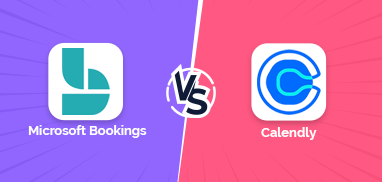“Great salespersons are relationship builders who provide value and help their customers win,” said Jeffrey Gitomer, an American author, professional speaker, and business trainer. Well, that sounds very motivational, and anyone can seemingly achieve it.
However, as the saying goes, it is easier said than done. The same is the case here. This implies that there is more than meets the eye that an organization must do to work out different strategies and improve sales.
There are times when an organization faces impediments in various business operations. It indicates that there are loopholes and a lack of efficiency in the management. When it comes to sales, overlooking these loopholes and inefficiencies for long can negatively impact the organization. This is because delays, inconsistencies, etc., can drift your potential customers away from you and lead to a decline in the bottom line.
If you are a business owner or a sales manager, you need to understand some major challenges in sales that can hamper productivity. This post will walk you through some most common obstacles and hindrances that can affect your sales performance. You’ll also learn about the ways to solve them.
Bottlenecks in Sales and How to Eliminate Them
1. Neglecting the Right and Chasing the Wrong
Your sales pitch is, of course, crucial. An off-the-mark, irrelevant, or unappealing sales pitch can put off your best potential prospects. But what if your sales pitch is good, but the customer is wrong? That’s an even bigger challenge or bottleneck that the sales department faces.
Yes, it happens with several businesses where they sometimes keep chasing wrong customers for long only to face rejections. This results in the wastage of time, money, and effort, which they could use on the right potential customer.
Ever wondered why this might be happening?
The possible reason could be incomplete data to back predictions or pick the right buyers. It can also be the lack of the right technology to analyze customers’ buying behavior and patterns.
Another problem complements the first problem of chasing the wrong customers. When you have more sales reps chasing the wrong customers, there are chances that you overlook the right leads. You may fail to give the time and effort you need to put in to convert your potential prospects into customers.
How to Eliminate It?
To direct your focus only on the right leads, examine your existing customers and buying patterns. This will help you build a set of buyer personas for your business. Personas represent your target audience, their pain points, preferences, etc.
Gather your customers’ reports of previous transactions, closed deals, web analytics, etc., to build buyer personas. You can also incorporate your buyer personas into your CRM records to track their responses to campaigns, products, or promotions. Also, keep track of won/lost opportunities, open leads, sales prospects, current sales activities, and more in your CRM. Keep updating your buyer personas to keep them in line with customers’ changing habits, trends, and needs.
To avoid any incidents of overlooking potential prospects, pay special attention to lead nurturing. Once you connect with a potential prospect and gain their interest, your next step is to ensure they don’t leave. In other words, it’s a must to keep them engaged at every stage of the buyer’s journey until they convert.
2. Issues and Mistakes in Lead Management
While the first stage of generating a lead is inevitably essential, the subsequent stage of bringing the lead to the bottom of the sales funnel also holds importance. It is at this point where many businesses fail to meet expectations. Even though they generate a good number of leads initially, the conversion ratio they achieve in the end turns out to be less than targeted. The reason is the mid-stream bottlenecks and mismanagement of leads.
Sometimes, there can be issues in approval processes. For instance, after nurturing your lead for a long time, you finally bring them close to the final purchase stage. They search for a product and want to ask for some discount for bulk purchase. What if your sales rep doesn’t have the authority to approve that and needs to ask you before approving it? If you are available, you can still do that, but it can halt the progress of the entire sale just due to one simple query or request when you are not present.
How to Overcome It?
One of the biggest issues is the lack of real-time communication between you, your reps, and leads.
- For example, you are New York’s regional head and have a team of 10 sales reps working under you. You have five boroughs- the Bronx, Manhattan, Brooklyn, Queens, and Staten Island as your five territories. As a sales manager, you must allocate these territories to your reps per the territory’s performance potential and the rep’s potential.
- Once you allocate territories, the next step is to manage and guide them and track their locations, activities, and daily progress. A CRM mapping tool can help you map all your CRM records, create territories, and visualize them.
- By optimizing their routes, time, and efforts on the field, you can easily drive more leads towards the final purchase to boost revenue. Make it a point to provide your sales rep with everything like demos, videos, relevant documents, etc., that they need to close deals on the spot. This helps avoid unnecessary back and forth between you and your rep. It helps you minimize situations where a lead very close to signing a deal gets a better option and changes their minds later.
- Analyze the time your rep spends on each meeting to get an idea of the potential outcome of the meeting. Accordingly, you can direct your rep to a given territory to take further action and save time and money. Keep a constant check on their movements and give them instructions according to the progress in real-time.
- Be it answering customers’ questions or providing them with anything they need before purchasing, your sales rep must handle it all. Further, you can pick from several marketing automation tools available to personalize your content and approach at every stage of your buyer’s journey.
Some software solutions can help you facilitate approval processes. You can set predefined authorization levels to allow and provide discounts based on the criteria. This will help you reduce the time of the sale process to complete and enhance the customer experience.
These steps will help you avoid lead mismanagement, streamline sales processes, and increase ROI and overall profitability.
3. Creating and Managing a New Sales Structure
Challenges arise when you proceed to create a new territory. If you don’t create and manage a new territory, your plan to start and expand your business can fall flat. While creating a new territory, the biggest challenge is that you don’t have any leads at all. Even if there are, they are very few and unqualified. Without implementing proper strategies, you can’t succeed in warming up those leads, making them qualified, and converting them into customers.
How to Eliminate It?
Some automation tools, mapping tools, and other technologies can help you manage your new territory. You can analyze your competitors, their performance records in the territory, build strategies according to your previous experience, and more.
4. Following Up Post Sale
So your lead has finally converted into a customer, and the sales process is complete. Well, there is still more that you need to do post the sale and can’t ignore. While it may not sound like a bottleneck because you can argue that your sales process is complete, it is not so. When you fail to follow up after a sale gets completed, you may lose out on the opportunities to upsell, cross-sell, or drive word-of-mouth publicity via loyal customers. Your first-time customers may never buy anything from you if you don’t ensure to keep in touch with them in one way or another.
How to Overcome It?
Automation can help you avoid this situation where you end up losing your opportunities of upselling and cross-selling. You can use automation tools to trigger personalized thank-you emails, discounts and offers, customer satisfaction surveys, invites to your events, etc. When customers know that you value them, they are more likely to consider you customer-oriented and become your customers forever.
Mappyfield 365 – Our Next-Gen Dynamics 365 Map Plugin to Streamline Sales
Now that you know how bottlenecks in sales can hamper your efficiency and revenue, if you are a Dynamics-based organization owner looking to overcome sales challenges, Mappyfield – our Microsoft Dynamics CRM mapping plugin can help.
It provides you with features like heat map visualization, route optimization and sharing, reports and analytical dashboard, territory management, live tracking, user-level configuration, security templates, and more. All these features help you map your records, boost location-based marketing and team productivity, visualize and analyze sales data, and more.
So, if you are all set to make your sales process hassle-free, it is time you integrated Mappyfield.
All product and company names are trademarks™, registered® or copyright© trademarks of their respective holders. Use of them does not imply any affiliation with or endorsement by them.





